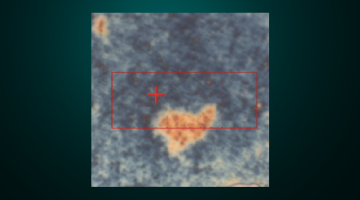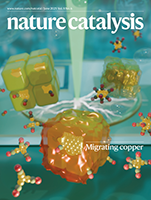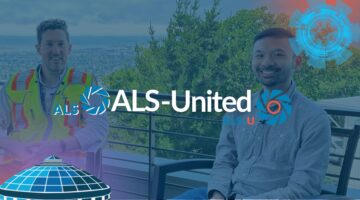The strontium ruthenate family has a perovskite-like structure that can assemble into different configurations, offering an ideal way to study how the physics change as the material goes from 3D to 2D. In this study, researchers revealed how electrons with different spins behave in distinct layers of a three-layer magnetic material. The results deepen the field’s understanding of how magnetism emerges in layered materials, an important concept for future magnetic technologies and quantum electronic devices. Read more »![]()
![]()
All News & Updates
2025 ACS Early Investigator Award for Greg Su
Staff Scientist Greg Su has been selected for an Early Investigator award by the American Chemical Society (ACS) Division of Polymeric Materials: Science and Engineering (PMSE). Attendees of the 2025 ACS Fall Meeting will be able to hear Su’s award seminar on Wednesday, August 20. Read more »
Stable 2D Interlayer Prolongs Perovskite Devices
Layered 2D/3D perovskite bilayer heterostructures have the potential to boost the performance and durability of many types of electronic and photonic devices, but maintaining this performance depends on the stability of the cell’s 2D interlayer. In this study, researchers optimized time-resolved, spontaneous thin-film deposition of 2D perovskites using a mixed solvent approach to produce phase pure, stable thin films with high crystallinity. Read more »![]()
![]()
Dehydration Key Element in Soil Microbe Evolution
A new study illustrates how microbes respond, in real time, to environmental stress, improving the research community’s knowledge of the hidden microbial engines that keep our planet running. Read more »
Researchers Identify Viral Swiss Army Knife, Clarifying How Replication Occurs
Viruses are ingenious, infectious agents, capable of replicating inside the living cells of a host organism. Enterovirus, a common viral pathogen, is responsible for a range of diseases from mild colds to severe conditions, including viral meningitis, myocarditis, and paralysis. A new study sheds light on how enteroviruses use structured RNA elements and multifunctional proteins to coordinate viral replication efficiently using minimal genetic material. Read more »
Operando probing dynamic migration of copper carbonyl during electrocatalytic CO2 reduction
In their work, Peidong Yang and colleagues reveal the dynamic evolution from faceted Cu nanocatalysts into metallic nanograins during CO2 reduction driven by the surface migration of electrogenerated copper carbonyl. Read more »
ALS-United: Jordan Caddick and Calvin Lau
ALS-United is an opportunity to meet the people collaborating at the Advanced Light Source and the ALS Upgrade Project. Hear firsthand how team science enables the cutting-edge research of today and builds the facility of the future. This month, we spoke with Jordan Caddick (Project Director in Projects & Infrastructure Modernization Division) and Calvin Lau (Principal Resource Analyst). Read more »
Multimetallic Systems Convey Cost-Effective Hydrogen Storage
A bimetallic material (Pd-Ni) produces hydrogen-active nanopockets that improve the efficiency and lower the cost of hydrogen storage systems. Mechanistic understanding of a Pd-Ni bimetallic system paves the way to design cost-effective hydrogen storage, opening new opportunities to develop reliable energy technologies necessary to advance the energy industry. Read more »![]()
![]()
Congratulations to Our 2025 Retirees
Eleven people from the ALS community are retiring, with more than 220 combined years of service. Thank you all for your contributions to the ALS, and congratulations on your retirement! Read more »
ALS at the Farmers’ Market
Once a quarter since the fall of 2023, Berkeley Lab has held a pop-up booth at the downtown Berkeley Farmers’ Market. Last Saturday, ALS staff had the opportunity to highlight the science taking place underneath the iconic dome on the hill. Read more and view photos from the day. Read more »
- « Previous Page
- 1
- 2
- 3
- 4
- 5
- …
- 139
- Next Page »









